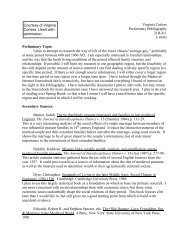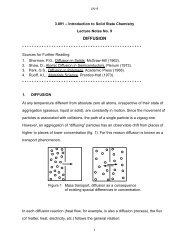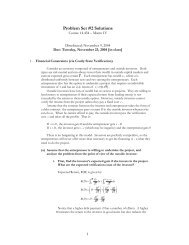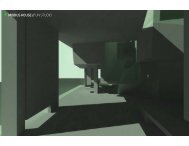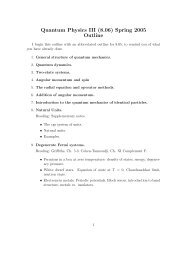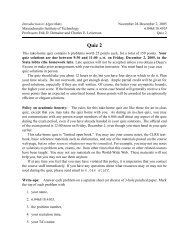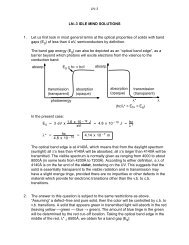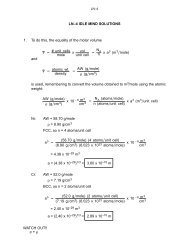Problem Set 4 Solutions
Problem Set 4 Solutions
Problem Set 4 Solutions
- No tags were found...
Create successful ePaper yourself
Turn your PDF publications into a flip-book with our unique Google optimized e-Paper software.
Handout 18: <strong>Problem</strong> <strong>Set</strong> 4 <strong>Solutions</strong>9(j) Conclude that the expected number of rotations performed when inserting a node intoa treap is less than 2.Solution:1 1E[number of rotations] = E[C + D] =E[C]+E[D] =1− +1−k n − k +1≤ 1+1=2.<strong>Problem</strong> 4-2.Being balancedCall a family of trees balanced if every tree in the family has height O(lg n), where n is the numberof nodes in the tree. (Recall that the height of a tree is the maximum number of edges along anypath from the root of the tree to a leaf of the tree. In particular, the height of a tree with just onenode is 0.)For each property below, determine whether the family of binary trees satisfying that property isbalanced. If you answer is “no”, provide a counterexample. If your answer is “yes”, give a proof(hint: it should be a proof by induction). Remember that being balanced is an asymptotic property,so your counterexamples must specify an infinite set of trees in the family, not just one tree.(a) Every node of the tree is either a leaf or it has two children.Solution: No. Counterexample is a right chain, with each node having a leaf hangingoff to the left(b) The size of each subtree can be written as 2 k − 1, where k is an integer (k is not thesame for each subtree).Solution: Yes.Consider any subtree with root r. We know from the condition that the size of thissubtree is 2 k 1− 1. We also know that the size of the subtree rooted at the left child ofr is 2 k 2− 1, and the size of the subtree rooted at the right child of r is 2 k 3− 1. Butthe size of the subtree at r is simply the node r together with the nodes in the left andright subtrees. This leads to the equation 2 k 1− 1 =1+(2 k 2− 1) + (2 k 3− 1), or2 k 1=2 k 2+2 k 3. Now we show that k 2 = k 3 . This is easy to see if you consider thebinary representations of k 1 , k 2 , and k 3 .Otherwise, if we assume WLOG that k 2 ≤ k 3 , then we have 2 k 1−k 2=1+2 k 3−k 2.Now, the only pair of integer powers of 2 that could satisfy this equation are 2 1 and20 . Thus k 3 − k 2 =0,or k 2 = k 3 , and the left and right subtrees of r have an equalnumber of nodes. It follows that the tree is perfectly balanced.


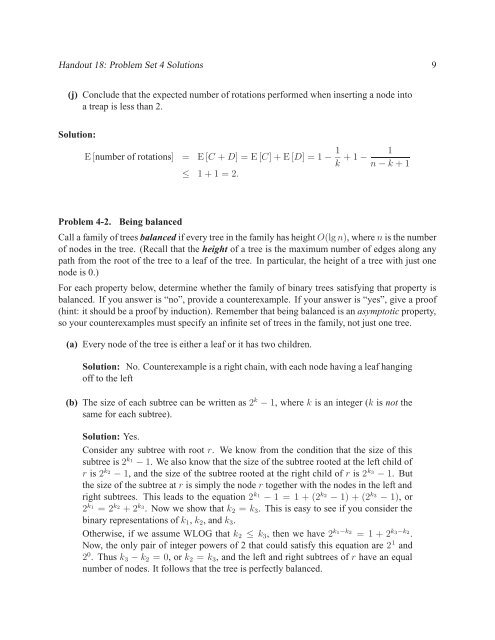
![18.03 Class 21, April 3 Fun with Fourier series [1] If f(t) is any decent ...](https://img.yumpu.com/51148985/1/190x245/1803-class-21-april-3-fun-with-fourier-series-1-if-ft-is-any-decent-.jpg?quality=85)

